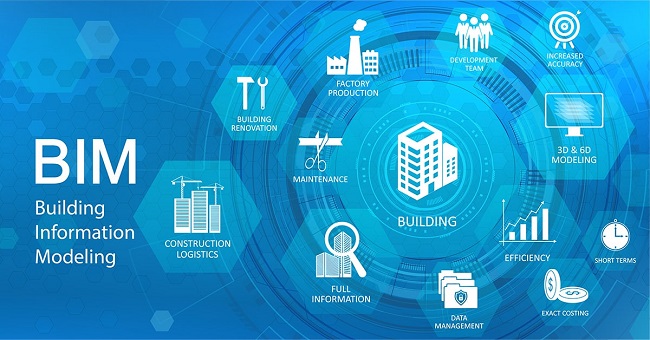Role of BIM Modeling in Preconstruction and Onsite Collaboration

In the construction sector, BIM has long been a topic of discussion. Despite all the discussion, there is still a lot of uncertainty regarding BIM in construction and how it may benefit contractors. One typical misunderstanding is that BIM is just a technology or only applies to 3D models. A Building Information Model comprising digital descriptions of every component of the physical building is the result of the BIM process, which creates and manages all the information about a project.
Contractors’ preconstruction challenges
Construction projects may get out of hand if there are many disputes in the initial design, be it MEP, architectural, or structural. Using standard equipment and procedures, contractors working on complicated building projects must overcome obstacles like:
- Conflicts during the installation phase brought on by incorrect and disorganized building design
- Ineffective teamwork and communication gaps due to siloed teams.
- Inaccurate CAD-based drawings needing constant revision
- Time shortfalls and project delays caused by antiquated scheduling methods and tools
- Construction site safety risks brought on by inadequate project visualization
How BIM modeling offsets these challenges and boosts collaboration?
- Boosts communication and collaboration
Paper drawing sets cannot be shared, collaborated on, or versioned as digital BIM models can. Cloud-based systems, like Autodesk’s BIM 360, enable seamless BIM collaboration across all project disciplines. Teams can exchange models and coordinate planning through the BIM 360 ecosystem, ensuring that all design stakeholders are aware of the project.
Project teams can even bring the office outside with cloud access. Teams can review plans and models both on-site and, on their smartphones, using apps like Autodesk’s BIM 360 tools, ensuring they always have access to the most recent project information. You can opt to outsource and get BIM modeling services.
- Improved visualization encourages more secure site construction
Contractors benefit from detailed visualizations of architecture, structural, and MEP systems thanks to walkthroughs strengthened with AR/VR capabilities. High performance, visual validation of the model, and constructability are all influenced by the capacity to interact with a variety of construction components in real time.
Contractors may create and maintain workflows to better accomplish assembly goals and onsite safety regulations with the use of construction simulators that incorporate phasing and logistics.
Close to 53% of large contracting organizations use software to manage safety and inspections on half of their projects, according to Autodesk Data & Analytics.
- Identifying and resolving conflicts
Contractors can identify issues and take corrective action with BIM by visualizing numerous project details using a useful model. Any change in the model impacts related components, and BIM can automatically inform you if your electrical fittings and plumbing fittings conflict. Professional Civil Engineering services are now available to help you complete a project more efficiently.
- Management of facilities
BIM covers data on the system and the equipment lifetime and replacement costs. Contractors can use the information to design new instalments, modifications, or other facility management-related improvements. Lifecycle data also serves as the foundation for cost projections for upgrades and improvements.
- Before construction, BIM helps customers to interact with projects
Even those who work in the construction sector have difficulty correctly interpreting architectural blueprints. The ability to use 3D models for design makes it simpler to communicate concepts to clients. People without formal architectural expertise may study designs and visualize the finished product with ease, thanks to 3D modeling.
A 3D model is becoming standard practice in the building industry. 3D modeling time can still be spent without BIM data. However, BIM incorporates the automatic creation of 3D models into the design process; it is a convenient option to present your facts.
With BIM, you can create blueprints without further planning or specialized architectural knowledge and then present them to clients or other evaluations. The 3D model developed offers open accessibility, permitting anyone to explore or even alter if they have the necessary authority. This enables design teams, modelers, and architects to collaborate more proactively with clients on building projects.
Takeaway: BIM improves workflow efficiency, visibility, and cooperation.
BIM enhances teamwork and minimizes mistakes. Thorough documentation and speedy workflows are both possible with BIM. 3D models of the designs are created through BIM. As a result, more people may access the data and interact with (and even modify) building plans.
Design and construction have significantly improved because of 3D modeling. It gives you the ability to test out concepts online before investing money in tangible assets. Without endangering actual building, architects and engineers can explore novel materials and push the practical boundaries of design and construction.
BIM entails extracting the relevant information in these 3D models and condensing it into a single editable database. Furthermore, BIM continues to contribute information about a building as it ages
Masstamilan is a popular website offering downloads of Tamil songs and ringtones. It is a go-to platform for Tamil music enthusiasts, providing a wide range of songs across various genres, including old classics and the latest hits.





